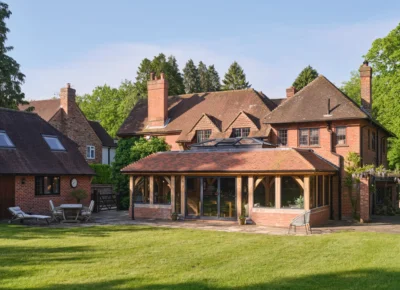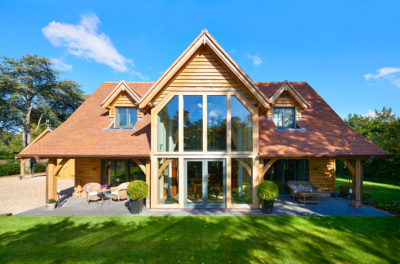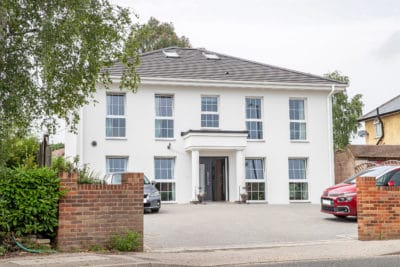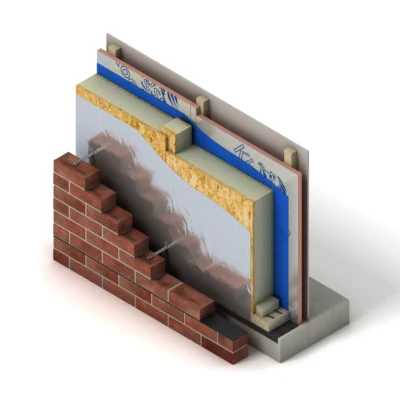Beginner’s Guide to Timber Building Systems
There’s a whole wealth of reasons why timber is such a popular structural option for self builders.
Although it’s one of the oldest construction materials around, the use of wood in modern construction is continuously evolving.
Timber is a flexible, sustainable, attractive and affordable material. So, what makes timber so special, and how can you use it to help you build an eco-friendly, cost efficient and attractive home?
Learn more: 10 Ways to Stay on Budget with a Timber Frame Home
Timber frame construction comes in many guises, lending itself equally well to modern and vernacular designs.
From conventional timber panels through to characterful oak frames, you’re sure to find a system to suit your requirements – whether your focus is on style, sustainability, cost or other practical considerations.
What’s more, all the systems have short onsite turnaround; so you can have a weathertight shell in a matter of days.
Almost all timber frame options include factory-made elements, and modern production techniques have reduced defects and improved quality overall. It’s this use of prefabrication that significantly lessens the amount of construction time required onsite, giving you certainty in terms of both scheduling and costs.
Timber frame
The most common timber construction method is an open or closed panel system. In basic terms, this comprises storey-height walling panels, which are factory built and made up of softwood studs attached to plywood or OSB sheathing to provide all-round strength.
Insulation is then fitted between the studs, with window and door apertures pre-cut (in some cases, elements such as the fenestration may even be fitted on the production line).
The attraction
As so much is done offsite, build times are super speedy – a typical house shell can be erected in under five days. What’s more, there’s plenty of design flexibility.
Case Study: Modern Timber Frame Home With Traditional Charm
|
Whether you work with an architect or a specialist timber frame company, you’ll be able to achieve pretty much any style you can imagine – think cantilevers, full-storey glazing and open-plan interiors (although if you wish, you can just as easily create a cosy cottage). The sector is also constantly evolving.
The system
With open setups, once the panels arrive to your site, they will be fixed together according to the manufacturer’s specifications to create the structural shell. The panels are left unboarded on the internal side until the building is weathertight.
You then get to choose what insulation is fitted onsite, before the walls are closed and – usually – battened out on the inner face to create a service void and provide a fixing for the plasterboard.
Closed-panel systems are very similar, but they involve a greater degree of offsite prefabrication. The walling elements are typically supplied with insulation, a vapour control layer, and window and door linings – but this could stretch to service voids, all the fenestration and even external finishes.
This is the method used by many of the popular German and Scandinavian housebuilders, such as Meisterstueck-Haus and Stommel Haus – mainly because it enables better accuracy and efficiency.
Many UK timber framers now lean towards closed panels, too. With more of the house finished, assembly is very quick, and the building can be made airtight and weathertight in double-quick time.
Need to know
Most of timber frame’s flexibility comes at the planning and specification stages. Because of the prefabricated nature of this system, the structural elements are bespoke engineered to your specific project.
So, once you give the green light to start the manufacturing process, it’s tough to make changes to the design.
That said, if there is a design feature that you decide you simply can’t live with – or without – there are ways to remedy this; you just have you decide you simply can’t live with – or without – there are ways to remedy this; you just have to be willing to spend the extra time and money.
Good thermal protection and impressive airtightness are fairly straightforward to achieve within relatively slim wall thicknesses – especially if high-quality insulation is used.
Oak frame
When asked to picture their ideal house, many people will instantly envisage something packed with charm. Robust, natural and beautiful, oak framing can deliver that in spades.
It has been used in home building projects for centuries and remains hugely popular for bespoke schemes.
The attraction
It’s safe to assume that much of the appeal of this construction method is down to the innate character the beams add. They create instant focal points throughout a house, injecting extra interest and warmth in even the smallest corner.
Today’s specialist oak framers mix heritage techniques with modern materials and production methods to create some of the most stunning self-builds around.
The system
In many ways, oak framing methods have stayed the same for centuries. Traditional post-and-beam techniques use large, widely-spaced wooden members for structural support.
The vertical posts and horizontal beams carry the building’s loads, while diagonal braces are required for lateral restraint. As the beams also support the roof, there’s no need for large numbers of load bearing interior walls, which makes creating open-plan spaces easy.
Case Study: Bespoke and Efficient Oak Frame Self Build
|
Frames can be made entirely by hand or machine cut (and possibly hand-finished) in a workshop. Onsite, they’re put together in sequence according to the frame drawings. The oak is usually craned into place rather than erected by hand (as would have been done in years gone by).
The timbers are connected using pegged mortise and tenon joints, which tighten over time as the wood matures. Some contemporary designs use stainless steel rods and bolts.
Need to know
Oak moves (and cracks) as it dries, so it’s hard to achieve modern levels of efficiency and airtightness by simply infilling the frame in the traditional way. This is why the shell is usually wrapped in insulating panels.
Learn more: How to Keep Oak Frame Costs Down
Many oak companies have their own encapsulation systems, designed specifically to work with their frames, but it’s also common to use SIPs for the same purpose. Either way, the result is an airtight and highly-insulated home.
Structural insulated panels
Widely known by its acronym (SIPs), this system has a lot in common with timber frame. The key difference is the panels’ insulation and sheathing are glued together under pressure, so there’s no need for internal studwork.
This creates strong, lightweight elements that offer distinct pros and cons in comparison to conventional panel systems.
The attraction
SIPs is ultra-quick to build with; some standard house designs can go up in just a couple of days, with fewer tradespeople needed onsite than with many other construction methods.
Case Study: Contemporary SIPs Home by the Sea
|
It also offers a straightforward route to achieving high standards of thermal efficiency and airtightness, reducing the chance of poor site practice compromising performance and delivering obvious benefits for heating bills. Less waste is produced with SIPs, too, which can help reduce your project’s overall carbon footprint.
The system
SIPs are pre-insulated panels that can form part or all of a self-build. The panels are usually made of two sheets of oriented strand board (OSB) that sandwich a layer of high-quality rigid insulation, such as polyurethane.
The resulting structural kit includes the walls and roof (which can be pre-fitted with windows, doors etc much as with timber frame) plus the floor and other core elements of the shell.
Learn more: How to Get the Best out of Building with SIPs
One of the big advantages of SIPs is that their innate strength makes it easy to create a barrier-free and ready-insulated habitable loft. Design-wise, you can achieve pretty much anything and all the usual cladding suspects are available – including brick, stone, timber and render.
With no studwork in the panels, cold bridging can be kept to a minimum, too – another boon in the efficiency stakes. This quality, combined with the method’s airtightness benefits, is one of the key reasons SIPs is often used as an encapsulation system for techniques such as oak framing.
Need to know
Building a home with SIPs requires precise measurements and small tolerances; there is little room for error in foundations, for example. Price-wise, the shell tends to be around 5%-10% more expensive than conventional timber frame – but some of this can be recouped in a speedier build and easier airtightness detailing.
The high level of prefabrication and accuracy means, provided you use a reputable supplier, you can be confident the finished house will deliver the performance level you’ve specified.
Top image: Located in a Cambridge City conservation area, Treehouse is an efficient closed-panel build by Baufritz.
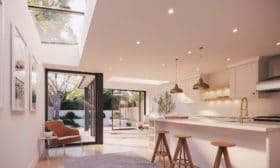















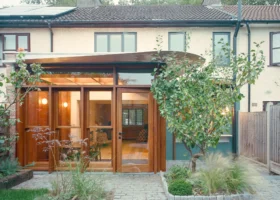

































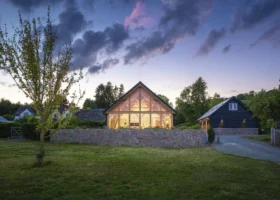













































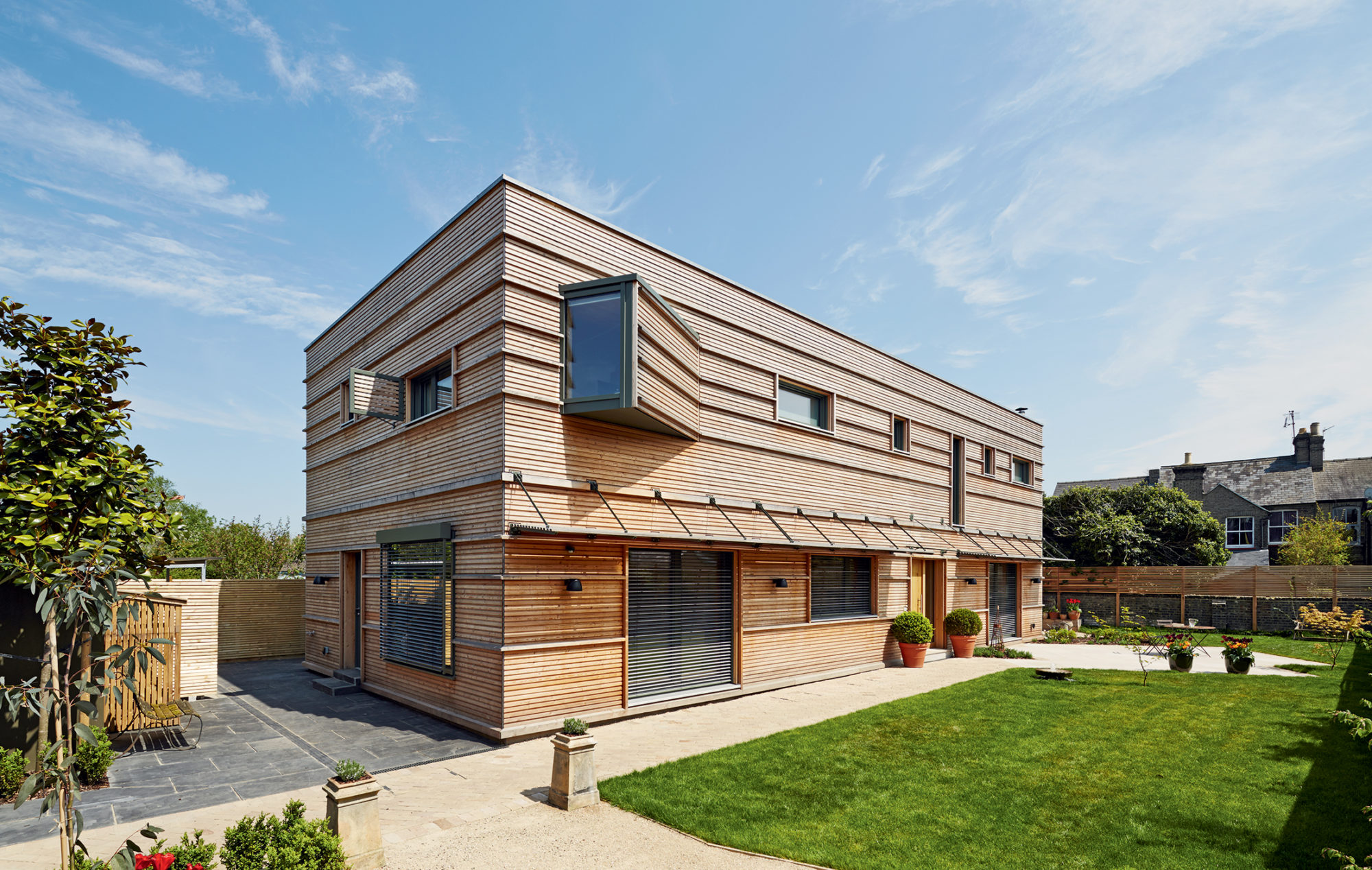
 Login/register to save Article for later
Login/register to save Article for later


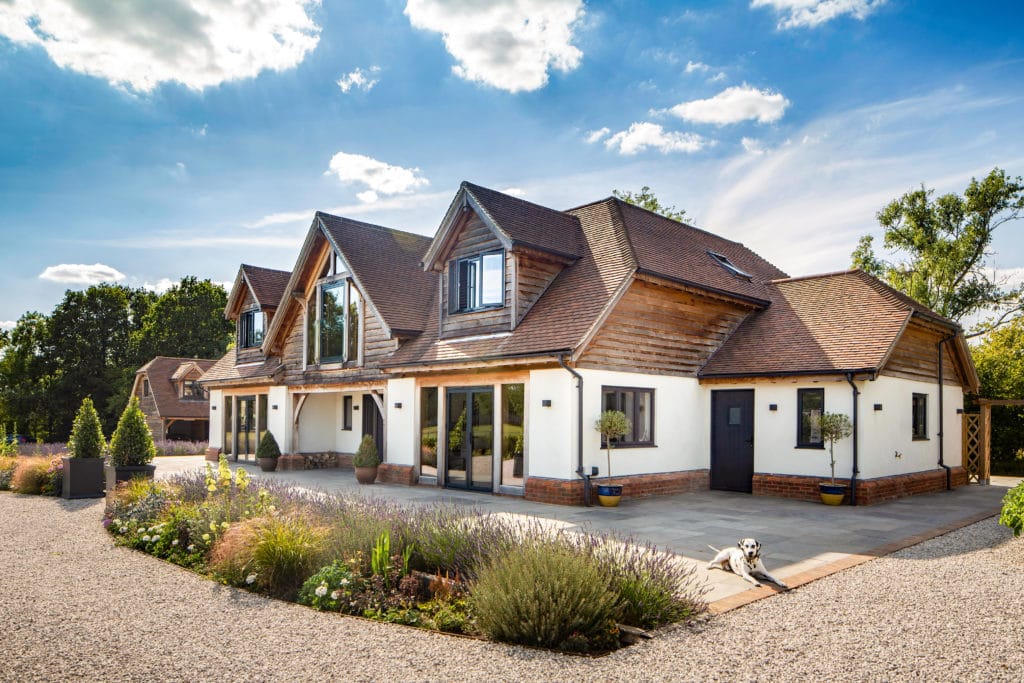
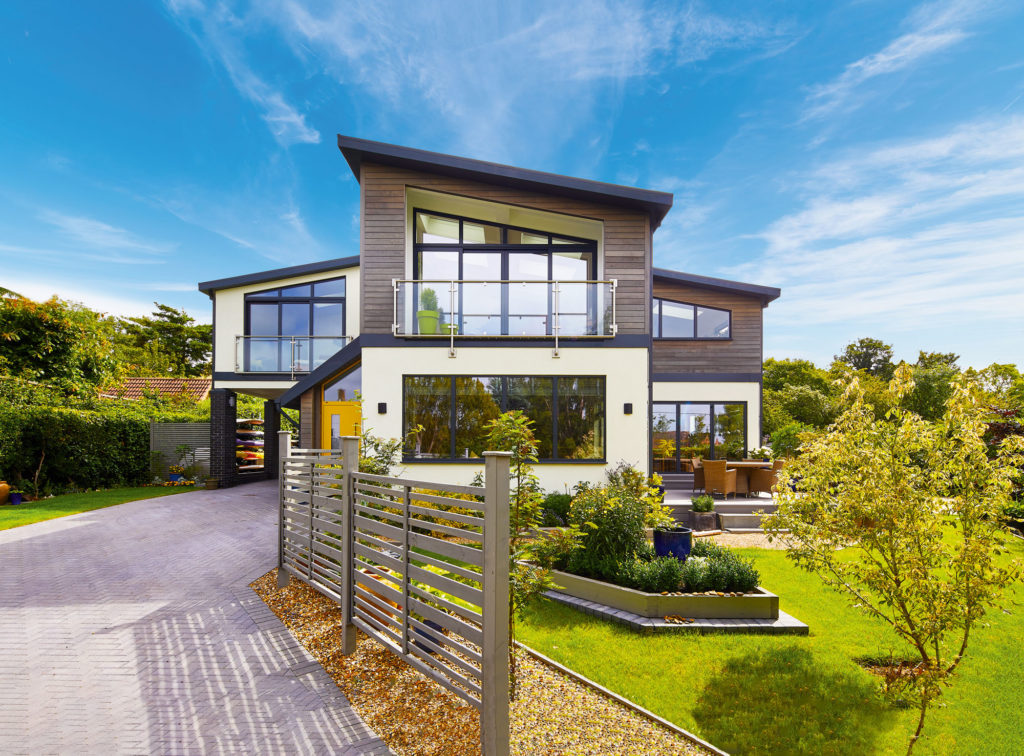 For Howard and Angela Payne, the phrase ‘once bitten, twice shy’ most definitely does not apply. The couple overcame multiple setbacks to create their stunning contemporary SIPs home by the sea.
For Howard and Angela Payne, the phrase ‘once bitten, twice shy’ most definitely does not apply. The couple overcame multiple setbacks to create their stunning contemporary SIPs home by the sea.



